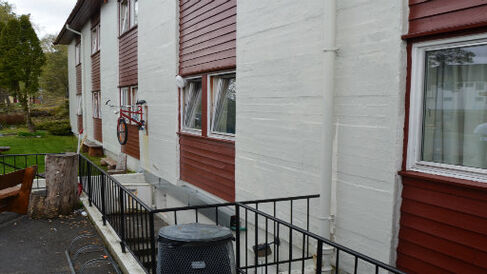Anna Schliehe Blog 1

Carceral mobility
Carceral mobility and analysis of what this means for individual prisoners is a topic that I have long been interested in from both a geographical and sociological point of view. Doing most of my fieldwork in England & Wales, prison mobilities have mostly carried connotations of restrictive regimes, questioning small-scale movements and possible agency within that. On our latest fieldwork trip to Norway, it struck me how a different mobility culture can have such a noticeable effect on prisoners’ every-day life and on the overall feel or atmosphere of ‘prison’. Paying attention to mobility was not really part of our main focus - having gone there to do a survey and ethnographic observation of life on one particular wing - but it surfaced time and time again, involving individual prisoners, visitors, animals, objects, both human and more-than-human geographies.
When we first arrived in the morning, a picture that stuck in my mind is a cyclist doing his rounds on the prison roads and paths. This being an unusual sight for me, I ask my Scandinavian colleagues, and they explain this to be quite ‘normal’ - they have a bike-re/up-cycling facility at this prison and prisoners regularly test the bikes and use them for exercise. Once a week they go out for long cycles on their race bikes. Generally, I keep noticing prisoners moving around relatively freely, having large areas available for exercise. The first day we spend at a prison that would probably be classified as a Cat C in the UK, so it is not altogether surprising that prisoners have keys to their cells, some leaving the prison at the weekend on home visits or having outings into the community. The next day, however, at a high security prison, prisoners seem to have similar opportunities: they, too, have keys to their cells, can leave the building and sit outside for a smoke or watch birds and enjoy the view of lakes, trees and mountains. They move around different parts of the prison for work and many have outings at the weekend with officers taking them on hill walks, to the theatre or a concert and even running marathons. Seeing runners on a trail in prison: I am completely overwhelmed by that description. Running a marathon as a prisoner in a high security prison, training with an officer – that is something I considered impossible before. Having outings to the local theatre? Unthinkable!
This form of bodily mobility is based on trust, a societal view on what prison is supposed to ‘be’ and ‘do’. It involves trust in the individual, a more in-depth relationship between prisoner and staff and also among prisoners. This corporeal mobility also affects object mobility: access to tools, communication devices, being trusted in a room ‘alone’ with a computer (with internet!), being trusted to handle knives in the kitchen - plastic cups and plates nowhere to be seen. Doing woodwork with huge machines and saws, or producing music with a whole range of instruments (including a laptop). It also involves different attitudes to unwanted body mobility: we hear that the week before three people ‘escaped’ – they jumped over the fence and left - but no one seems to be extremely alarmed. There is no ‘manhunt’, no media attention and they will probably be picked up again soon or maybe return by themselves.
Having witnessed all of this ‘unthinkable’ mobility, the difference compared to Norway’s remand and entry detention is stark: while physical conditions might be more comfortable than in some English prisons, the mobility regime certainly is not. Prisoners spending most of their time in cells, having only small concrete and metal areas for exercise when on remand or in early custody, is surprising.
This leaves me with many questions relating to prison regimes, societal expectations and prisoners’ lived realities. Does access to the ‘outside’ world, access to extensive exercise ‘outside’ and the use of machinery, tools and every-day items make a difference? Does it help reintegration? Does it change how ‘human’ or individual you feel as part of the ‘system’? How does that relate to feelings of being imprisoned, of being locked-in? What effect does this more ‘mobilist’ thinking have on prison’s ‘underlife’ - on forbidden mobility, on stretching or dodging rules and regulations?
We will hopefully have much more to say on this further down the line. Tusen takk for opening my eyes to these new carceral mobilities and wider societal implications!
Dr Anna Schliehe is a Research Associate in the COMPEN team, Institute of Criminology, University of Cambridge.
